Revealing the Hidden Diversity in Parasitic Cordyceps Fungi and their Host Association with Insects & Spiders in the Neotropics,
PSMS Monthly Meeting, Tuesday June 14, 7:30pm - Doors open at 6:30 pm at the Center for Urban Horticulture (directions).
Cordyceps are bizarre club fungi which parasitize a wide range of insects and spiders as well as false truffles. In the neotropical rainforest many display bright and vibrant colored fruiting bodies emerging from the leaf litter or decaying logs. Others are hidden away, attached to the underside of leaves. For understanding Cordyceps it is crucial to uncover and identify the host. Most of Cordyceps' life cycle takes place inside the host. After infection the fungus manipulates arthropod behavior, basically creating a zombie that moves to a location to die for optimal spore dispersion so the next victim is easily reached. This has recently been proven in the case of carpenter ants in Thailand and such behavior was also observed by some Amazonian Indians in crickets, beetles and even spiders since ancient times. Hearing those stories from her Colombian professor who had traveled with the famous American ethno-botanist Richard Schultes through Colombian jungles arose her interest in studying Cordyceps and its relationship with its host insects. For almost twenty years she has traveled across the jungles of Colombia, Ecuador and Brazil collecting, identifying and describing new species of Cordyceps. In this talk she will share with us the diversity of neotropical Cordyceps and fascinating indigenous stories regarding Cordyceps and its relationship with insects and spiders and analyzing these folk stories in the light of the scientific theories.
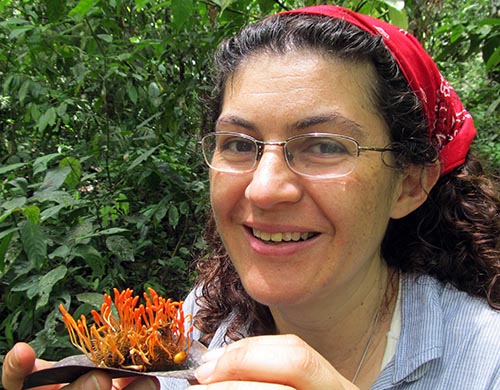 | Tatiana Sanjuan holds a PhD in Biology from Antioquia University in Medellin, Colombia. For almost 20 years her research has focused on the entomopathogenic fungus Cordyceps s.l. in the Amazon and other tropical rainforests. She started her research when she learned of the indigenous Amazonian myth about zombie bullet ants, the liana called "Yare" and Cordyceps. In her postgraduate research she published 5 articles describing 8 new species of Cordyceps s.l. from the Amazon and their relationships with their respective hosts. Currently she is working on the pharmaceutical potential of a new species of Cordyceps which parasitizes Tarantula spiders.
Tatiana is also planning on giving a talk in Vancouver BC at UBC on Friday evening, June 17. |
Some of Tatiana's newly described species I encountered in South America
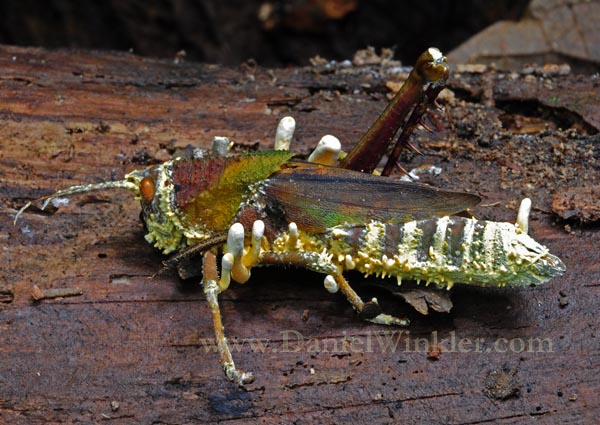
Cordyceps acridophila T. Sanjuan & A. E. Franco-Molano, Mycologia 106 (2): 268 (2014), a grasshopper parasite we found in February 2012 in Madidi National Park, Bolivia in 250 m asl.
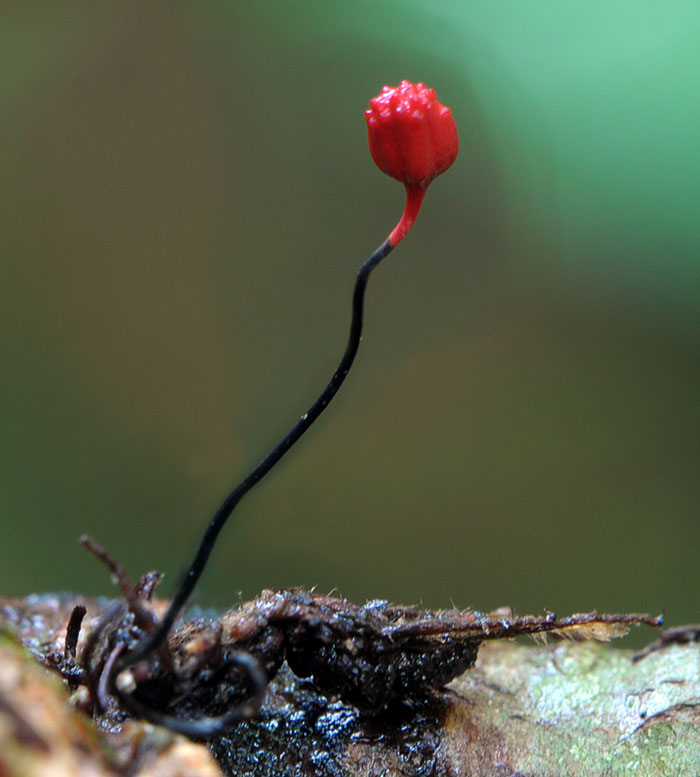
Ophiocordyceps evansii, a new species parasitizing neotropical Pachycondyla ants recognizable by its capitate stroma with erumpent ostioles. Specimen depicted found in Leticia, Colombian Amazon, April 16, 2016 in 75m asl. Reference: Sanjuan, T. I., Franco-Molano, A. E., Kepler, R. M., Spatafora, J. W., Tabima, J., Vasco-Palacios, A. M., & Restrepo, S. (2015). Five new species of entomopathogenic fungi from the Amazon and evolution of neotropical Ophiocordyceps. Fungal Biology, 119(10), 901-916.
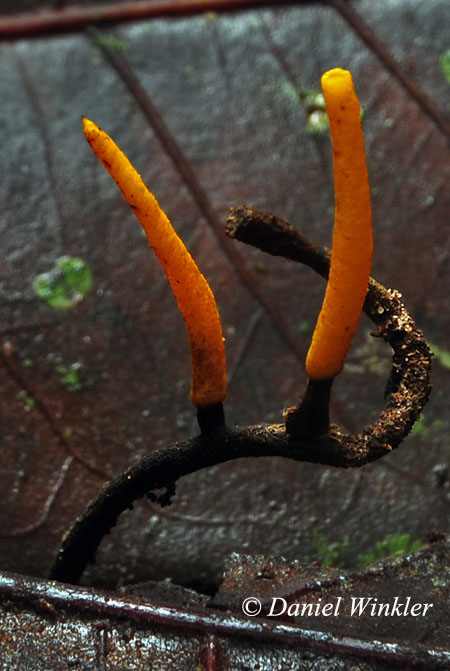
Ophiocordyceps tiputini sp. nov. with yellow ascomata and branched blackish stroma on Megaloptera larva. Found in Mashaquipe, Madidi National Park, Boloivian Amazon, Feb. 2013.
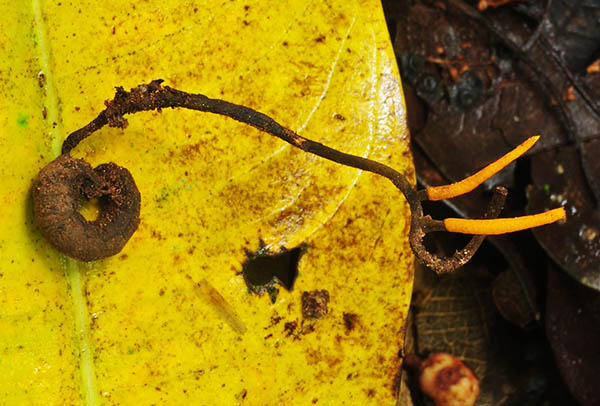
Ophiocordyceps tiputini, same specimen as above